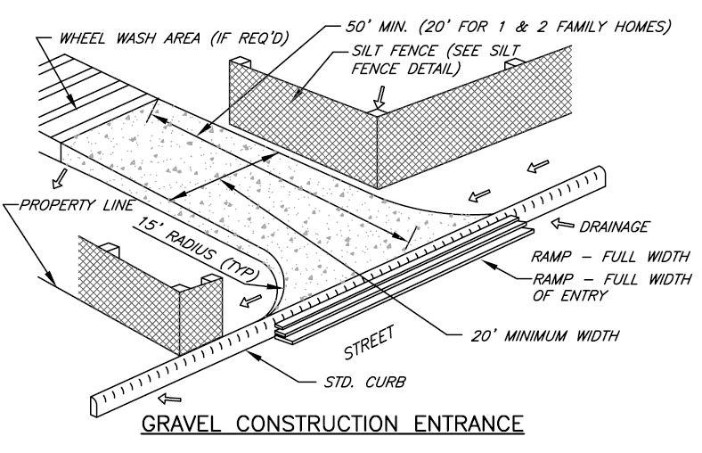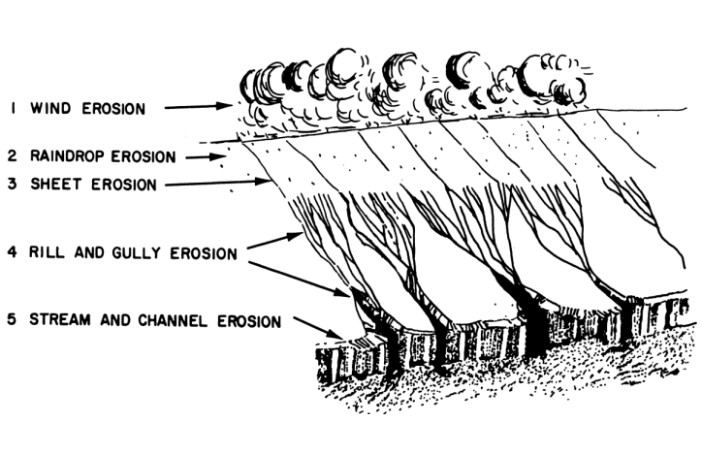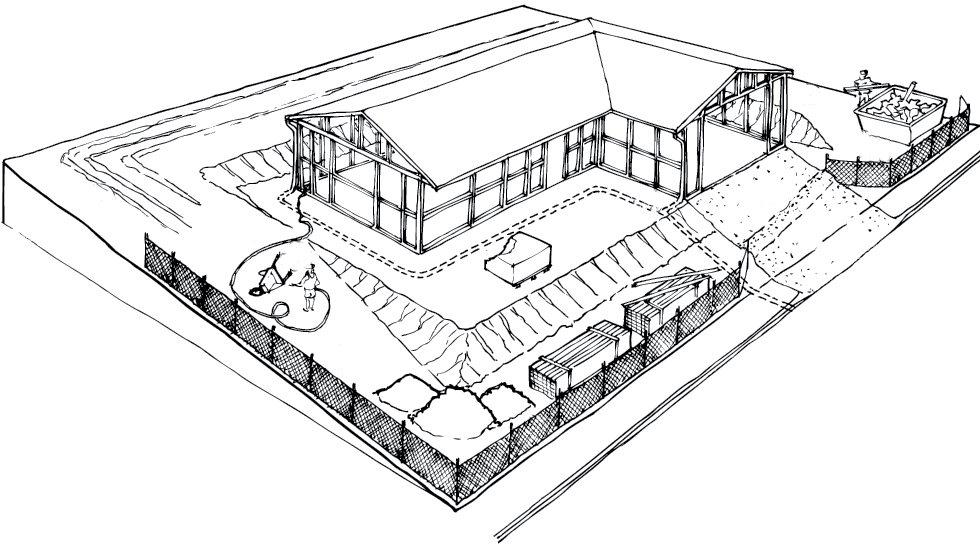Erosion And Sediment Control Plan (ESCP) is a plan that details temporary measures that will be implemented during the construction phase. It also includes permanent measures that will remain in place once development is complete to control the environmental impacts of erosion and sedimentation.
1. Importance of an Effective Erosion and Sediment Control Plan
The effectiveness of an ESCP is crucial in preventing unauthorized discharge. Conducting a careful examination of the project site during the design phase is essential to identify potential challenges posed by factors such as slope, drainage patterns, and soil types. This assessment forms the basis for creating an efficient erosion and sediment control plan.

2. Submission Requirements for ESCP
An ESCP as part of the plan set with the planning and/or building permit application submittal. For projects including those requiring a Grading Permit, separate erosion and sediment control plans are required to show the measures to be implemented at the grading stage (e.g., grading, foundation/retaining walls) and at the construction stage of the project.
3. Components of an Erosion and Sediment Control Plan
The plan shall show what Best Management Practices (BMPs) will be used, when, and where, specific to the project scope, along with the total disturbance area and installation details and notes for the proposed BMPs. Measures include those necessary to delineate areas of work/disturbance, prevent erosion of unstable or denuded areas, plan for construction staging and storage logistics, construction of stabilized access points, and proper containment measures for construction materials and waste.

4. Key Elements of an Erosion and Sediment Control Plan
The key elements that should be included in An ESCP are:
- Boundary lines of the site.
- Limits of disturbed areas.
- Existing drainage patterns and direction of flow.
- Accurate contours showing the topography of the existing ground. The contour lines shall be at intervals sufficient to show the configuration of the ground before disturbance.
- The location of all existing buildings, structures, easements, or underground utilities.
- Concrete Washout
- Fiber Rolls
- Geotextiles and Mats
- Inlet Protection
- Silt Fence
- Stabilized Construction Entrance
- Stockpile
- Tree Protection
5. Benefits of Outsourcing ESCP Services
Outsourcing the design and drafting of Erosion and Sediment Control Plans to a professional firm like CivilOutsourcing.com can offer several advantages to land development projects:
- Expertise and Specialization: Gain access to a team of experts with specialized knowledge and experience in erosion and sediment control, ensuring high-quality plans that meet industry standards.
- Time and Cost Savings: Save time and resources by leveraging the efficiency and expertise of outsourced professionals, reducing overall project costs.
- Focus on Core Competencies: Allocate internal resources and attention to core project functions while outsourcing non-core tasks like erosion and sediment control planning.
- Scalability and Flexibility: Easily adjust outsourcing levels to meet project demands, ensuring efficient resource allocation and cost control.
- Regulatory Compliance: Partner with a reputable outsourcing firm that stays up-to-date with regulations, ensuring compliance and minimizing the risk of penalties.
By following this outsourcing process, we aim to streamline the Erosion and Sediment Control Plan development, enhance efficiency, and deliver comprehensive and compliant plans that meet your project goals.

If you are keen to find out more about how our firm can work with you to complete your ESCP, contact us today. You can fill out our online form below or contact us via contact@civiloutsourcing.com. When cost-effectiveness and quick turnaround are important, and quality cannot be sacrificed, turn to Civiloutsourcing.com services for Erosion And Sediment Control Plan.
Source: https://civiloutsourcing.com/erosion-and-sediment-control-plan/


No comments:
Post a Comment